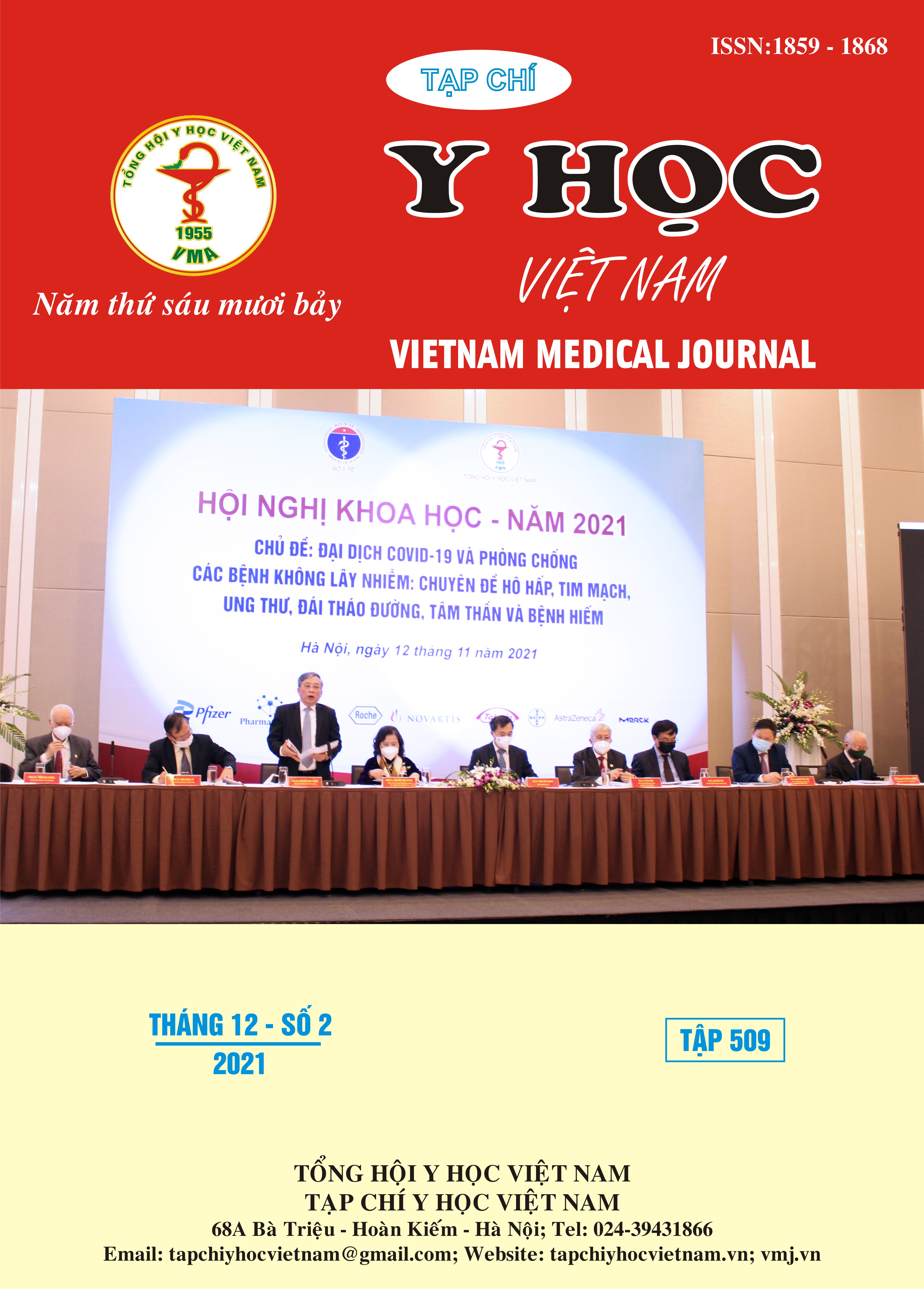PROGNOSTIC FACTORS OF TUBERCULOUS MENINGITIS IN CHILDREN IN VIETNAM NATIONAL CHILDREN’S HOSPITAL
Main Article Content
Abstract
Tuberculosis (TB) is an important cause of childhood morbidity. Tuberculous meningitis (TBM) is a severe form of tuberculosis, which can cause serious complications and death. Purpose: Research prognostic factors of children with meningeal tuberculosis in Vietnam National Children’s Hospital (Vietnam NCH). Methods: A cross-sectional desciptive study of all patients who were diagnosed with TBM at Vietnam NCH. Results: There were 125 patients with menigeal tuberculosis in 6 years from June 2015 to May 2021, age of mainly under 5 years old (81%), male / female ratio is 1.6: 1; exposed to TB (55,6%). The average time from symptom to diagnosis was 25 days. The most common symptoms were fever (98%), weight loss (52%); convulsions (47%), hypertonia (56%), meningeal signs (71%), cranial nerve paralysis (35,2%), MRC grade (United Kingdom Medical Research Council criteria) I, II, III corresponding to 22,4%, 38,4%, 39,2%. Number of CSF cells were of less than 100 per ml, median of CSF protein concentration was of 2g/l (quarter range: 1,4 –3,8). Hyponatremia was in 87,2% of the patients. Positive TB culture and positive PCR result from CSF were 70,4%. Abnormalities on cerebral MRI were 85,5%, including ventricular dilatation (80%). Delayed treatment, more severe MRC grade, hypertonia were prognostic factors for mortality; Aged ≤ 5 years, Delayed treatment, more severe MRC grade, hypertonia, degree of hyponatremia, hydrocephalus were associated with mortality or the combined endpoint. Conclusions: Tuberculous meningitis in children at the National Children's Hospital is common in children ≤ 5 years old, with significant mortality and sequelae. Delayed treatment, more severe MRC grade, hypertonia, degree of hyponatremia, hydrocephalus are prognostic factors of mortality and neurological sequelae.
Article Details
Keywords
Tuberculous meningitis, Children, prognostic factors
References
2. Marais B.J. và Pai M. (2007). Recent advances in the diagnosis of childhood tuberculosis. Arch Dis Child, 92(5), 446–452.
3. Daniel B.D., Grace G.A., và Natrajan M. (2019). Tuberculous meningitis in children: Clinical management & outcome. Indian J Med Res, 150(2), 117–130.
4. Bộ trưởng Bộ Y tế Quyết định 4263/QĐ-BYT năm 2018 về hướng dẫn chẩn đoán, điều trị và dự phòng bệnh lao. .
5. Ge T. và Th T. (2005). Tuberculous meningitis: many questions, too few answers. Lancet Neurol, 4(3).
6. Bang N.D., Caws M., Truc T.T. và cộng sự. (2016). Clinical presentations, diagnosis, mortality and prognostic markers of tuberculous meningitis in Vietnamese children: a prospective descriptive study. BMC Infect Dis, 16(1), 573.
7. Thwaites G.E., Chau T.T.H., và Farrar J.J. (2004). Improving the Bacteriological Diagnosis of Tuberculous Meningitis. J Clin Microbiol, 42(1), 378–379.
8. Rohlwink U.K., Kilborn T., Wieselthaler N. và cộng sự. (2016). Imaging Features of the Brain, Cerebral Vessels and Spine in Pediatric Tuberculous Meningitis with Associated Hydrocephalus. Pediatr Infect Dis J, 35(10), e301–e310.


